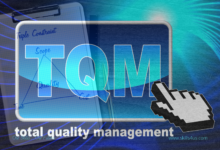
The Future Of Retention Strategies (And Why You Should Pay Attention)
Retention strategy is not a priority of HRM in every organization. And it also has critical importance for the continuation of the organization and increases its productivity. Therefore, it should be among its priorities alongside other HRM functions.
As a business leader, and as you work hard to get the right employees in your organization, you must work just as hard and hard to retain them. However, having an outdated or poorly designed retention strategy is as bad as it doesn’t exist at all. Some ways to make sure your organization’s retention strategy works as well as the performance of the employees you’re trying to retain.
Yesterday’s Motivation Vs. Today’s Workforce
We live in an era of the “job consumer,” where people switch jobs frequently, searching for a satisfying career. Today’s employees, especially millennials, want to know that their work has meaning and a long-term vision, although it is not necessarily about money.
The number one main reason employees stay in an organization is their challenge and interest in their work. At the same time, the competitive benefits package is next to their interests.
There are challenges in every organization, but start-ups and small businesses have a built-in advantage. Employees can grow with the organization and share in seeing it succeed by attracting the best talent during those demanding first few years.
No appreciation, no retention
Suppose you think a competitive salary and benefits package is enough to keep your best employees. In that case, you are using the wrong retention strategy from an unprofessional point of view and are not preparing for a bright future for your organization. Note that this is not a way to win and retain the best talent. It is, therefore, necessary to recognize, encourage and reward high performers, but it does not have to be costly to be effective. And you have to keep in mind the low-cost options. And remember that when it comes to appreciation and gratitude, the gesture itself is often the most important.
Opportunity comes whether you want it or not.
Although you want to keep your top employees in their roles forever. You also know this is impossible because high performers are always looking for career advancement and development when you have to make it easier.
If your first employees are precious, you will need to keep them in the organization. Because influential and distinguished employees impact no matter where they are in the organization chart.
And remember, if you don’t let the high performers take over, someone else will. So if you don’t have a promotion for them at the moment, be honest with them. Then they will respect that and trust you too if you communicate effectively with them.
Assign them more responsibilities in their current role, let them lead a project. And find a way to continue building that trust while maintaining it in their work, and transformation, in the organization.
Managers make a huge difference.
Retaining employees means creating a positive environment where they enjoy being there every day. Note that the manager or supervisor who reports to him essentially defines this environment. Hence the question: “How many employees have quit just because they don’t like their boss?“
Interaction with the line manager is the first driver of employee engagement. Moreover, managers are the gatekeepers between the main goals of the organization’s activity and the individual work that helps achieve those goals, making this relationship crucial to the organization’s success.
From here, it is clear that the key is to make an effort to get to know your employees personally, where you can send out a fun survey to find out what makes them excited and what interests them. It will then direct you to what you should do to motivate and reward them.
Communication reinforces loyalty
One-on-one meetings provide the ongoing communication necessary to create a positive work environment. It’s also a great way to enforce or modify performance goals, meet needs, and give praise and gratitude. Those few minutes will go miles when it comes to building loyalty and motivating your employees so you can get them to step up when you need their extra effort.
When something happens, and you must muster their efforts and skills, they will rise to the challenge. Finally, all the efforts put into a job retention strategy for your employees are appreciated.



